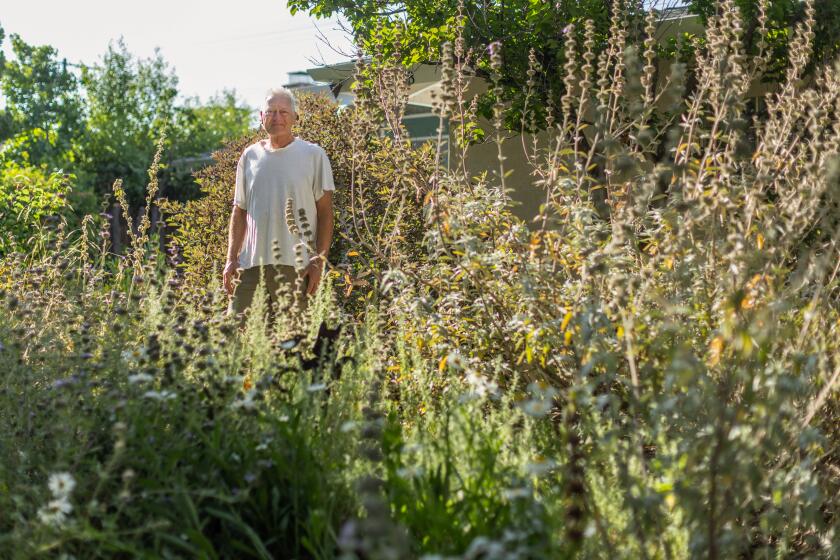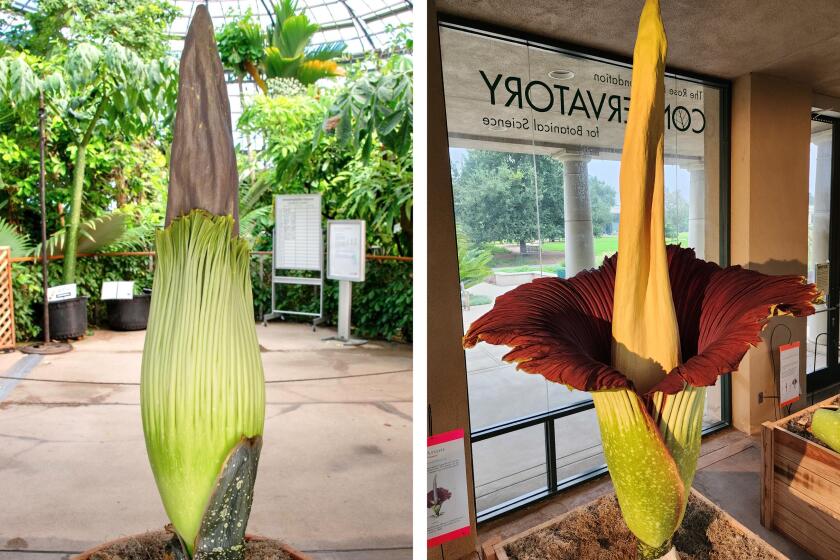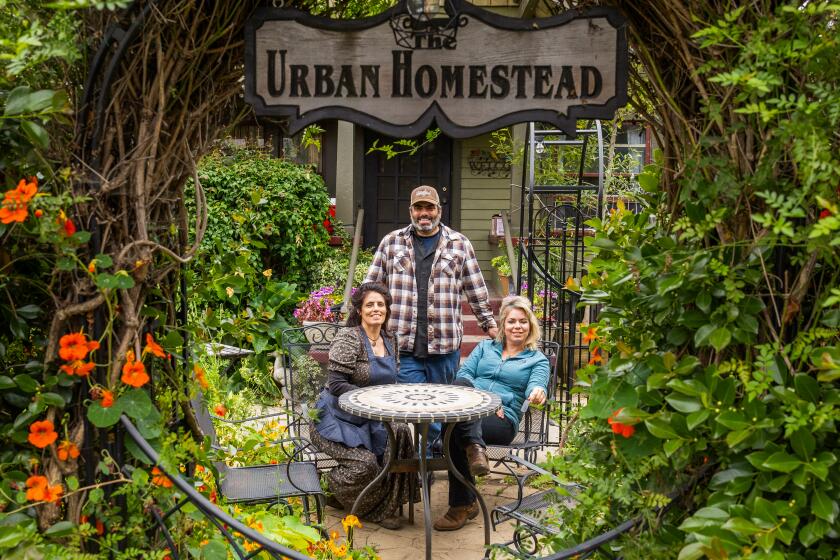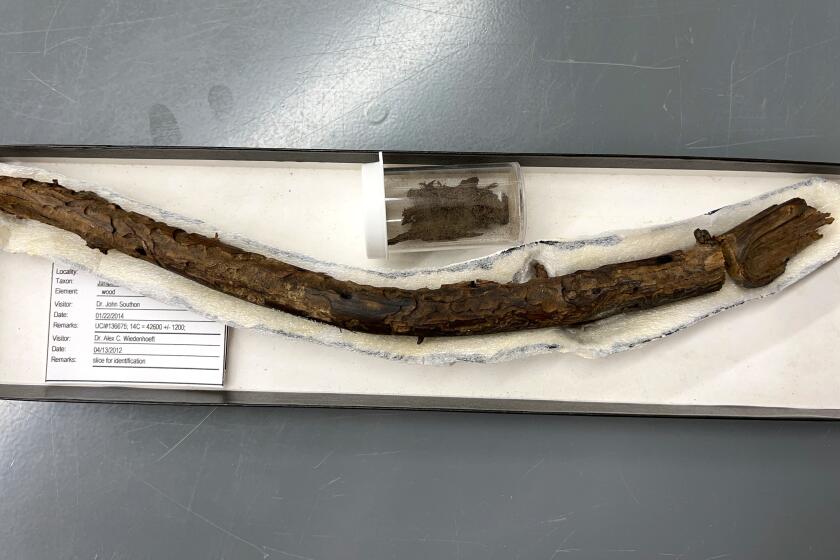JAUNTS : Herb Garden Offers a Glimpse of the Past : Tour at Olivas Adobe will revisit the 1800s, when settlers used plants for medications and fragrance as well as for cooking.
More than 100 years ago, when the Olivas family prospered at their adobe rancho in what is now Ventura, they probably relied on herbs for everything from spicing up dishes to curing indigestion.
In those days, most every rancho had an herb garden. So, three years ago, docents at the Olivas Adobe Historic Park planted an herb garden using only those herbs from the rancho period.
It flourishes now with about 30 different kinds of herbs that you can peruse during a tour Saturday of the garden and grounds. Led by docent Jeanne Pruitt, it runs from 1 to 3 p.m. and it’s free.
On the tour, Pruitt, dressed in period costumes, provides a snippet of history about rancher-businessman Don Raymundo and Dona Teodora Olivas and their 21 children who lived in the stately home built by Chumash Indians from 1847 to 1850.
Like most people of the rancho period, the family likely used herbs for much more than culinary or medicinal purposes. The fern-like tansy plant was an early insect repellent. If it was rubbed on meat, it kept the flies away. It also worked on ants, fleas and moths. And it was used to make green dye, as was yarrow.
The spiny heads of the teasel plant served as clothing brushes for early California settlers who also used them for teasing and carding wool.
If you stroll along the path through the garden, you’ll take in several herbs prized for their fragrance. Lavender went into perfume, hair rinses and fragrant wreaths. Lavender and costmary were combined to sweeten linens. The rose geranium was hung in closets and added to perfumes and potpourris. Rosemary, known for its seasoning qualities, also was strewn on the floor to freshen the air.
Pruitt and the docents sprinkle their talk with herb lore. The borage plant gets its name from the Celtic word for courage. Supposedly, the Crusaders drank wine with borage blossoms in it before they left for the Holy Land.
“I think it was the wine that gave them courage,” Pruitt said jokingly.
Nonetheless, early settlers planted borage to spread courage and good cheer. They also prized it as a tonic for all kinds of ills. It has a cucumber-like taste that attracts bees for pollination.
They treated various ailments with herbs: peppermint for indigestion, horehound for sore throats, rue for headaches, chamomile to relax, feverfew for fevers.
“Yerba mansa was a treasured plant,” Pruitt said. “They would go for miles to find it.” They chewed the roots for colds. They ground it to a powder to put on knife wounds. They heated the leaves and made a poultice for swellings, or boiled the leaves to soak their sore feet.
The garden is loaded with culinary herbs, Pruitt’s specialty. You’ll see basil, marjoram, Mexican oregano, sage, thyme. (The garden also yields a few vegetables from the era, like pumpkin, chili peppers, tomatoes.)
During the tour, Pruitt passes on a few of her own herb tips. For instance, to get the best flavor from herbs, rub the leaves between your fingers to release the essential oils before cutting. And if it’s soup or some long-cooking dish you’re making, add fresh herbs during the last 20 minutes. She also explains how to dry your own herbs.
Pruitt probably will pass on a few of her recipes too, like one of her favorites: pasta with fresh basil and tomato. “There’s nothing like fresh herbs to cook with,” she said. “They’re so much more marvelous than dried herbs.”
Details
* WHAT: Herb garden tour.
* WHERE: Olivas Adobe Historic Park, 4200 Olivas Park Drive, Ventura.
* WHEN: Saturday, 1 to 3 p.m.
* COST: Free.
* CALL: 658-4726.



